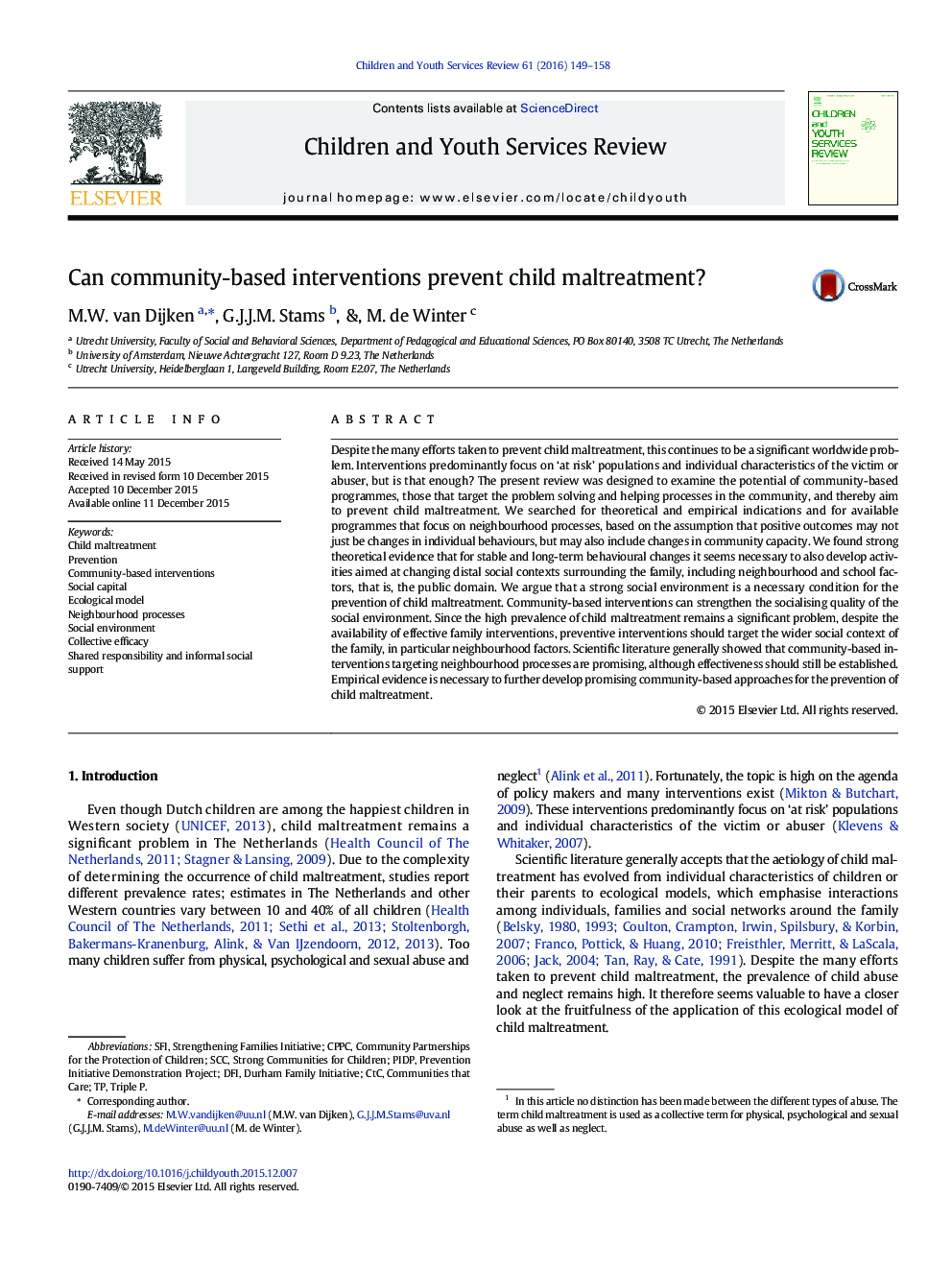| Article ID | Journal | Published Year | Pages | File Type |
|---|---|---|---|---|
| 345885 | Children and Youth Services Review | 2016 | 10 Pages |
•Few interventions in the Western world target neighborhood processes, e.g. collective efficacy to prevent child maltreatment.•For long-term behavioral changes; aim at distal determinants to complement individual approach in child maltreatment.•Literature shows that interventions targeting neighborhood processes are promising, but effectiveness should be established.
Despite the many efforts taken to prevent child maltreatment, this continues to be a significant worldwide problem. Interventions predominantly focus on ‘at risk’ populations and individual characteristics of the victim or abuser, but is that enough? The present review was designed to examine the potential of community-based programmes, those that target the problem solving and helping processes in the community, and thereby aim to prevent child maltreatment. We searched for theoretical and empirical indications and for available programmes that focus on neighbourhood processes, based on the assumption that positive outcomes may not just be changes in individual behaviours, but may also include changes in community capacity. We found strong theoretical evidence that for stable and long-term behavioural changes it seems necessary to also develop activities aimed at changing distal social contexts surrounding the family, including neighbourhood and school factors, that is, the public domain. We argue that a strong social environment is a necessary condition for the prevention of child maltreatment. Community-based interventions can strengthen the socialising quality of the social environment. Since the high prevalence of child maltreatment remains a significant problem, despite the availability of effective family interventions, preventive interventions should target the wider social context of the family, in particular neighbourhood factors. Scientific literature generally showed that community-based interventions targeting neighbourhood processes are promising, although effectiveness should still be established. Empirical evidence is necessary to further develop promising community-based approaches for the prevention of child maltreatment.
